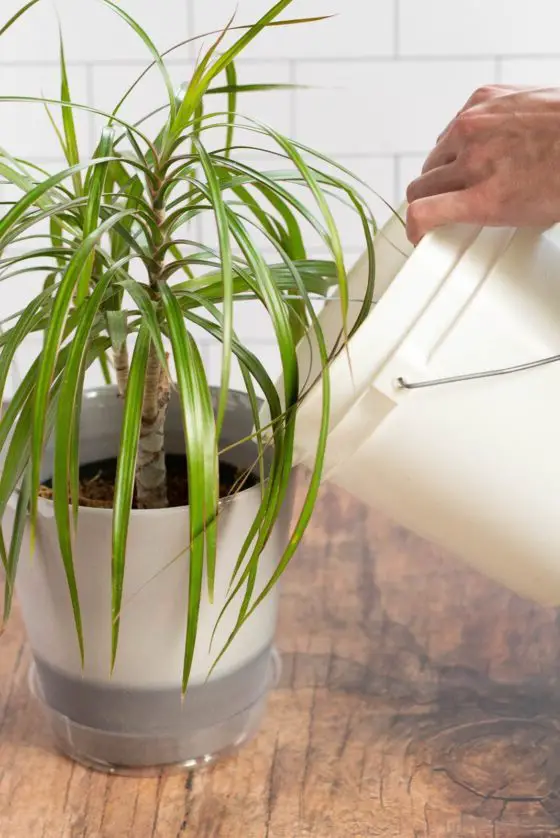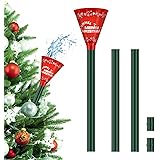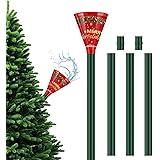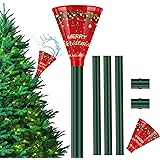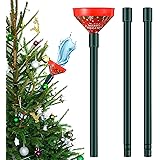Looking to keep your dracaena plants healthy and thriving? One important aspect of their care is fertilization. In this article, we’ll discuss how to fertilize dracaena effectively. Whether you’re a seasoned plant parent or just starting your green journey, you’ll find valuable tips and information in this guide. We’ll explore the different types of fertilizers suitable for dracaena, the best time to fertilize, and the correct application methods.
By the time you finish reading, you’ll be equipped with the knowledge you need to care for your dracaena and ensure its vibrant growth. So, let’s dive in and unravel the secrets of how to fertilize dracaena!
How to Fertilize Dracaena
Dracaena is a popular houseplant known for its attractive foliage and easy care requirements. To keep your dracaena healthy and thriving, proper fertilization is essential. Fertilizing your dracaena provides the necessary nutrients for growth, promotes vibrant foliage, and helps prevent nutrient deficiencies.
In this article, we will explore the best practices for fertilizing dracaena, including the types of fertilizer to use, when and how often to fertilize, and additional tips to ensure optimal plant health.
The Importance of Fertilizing Dracaena
Fertilizing is crucial for dracaena plants as it provides the essential nutrients that may be lacking in the soil. While dracaenas are generally considered low-maintenance plants, they still require regular feeding to maintain their health and beauty. Here’s why fertilizing is important for your dracaena:
- Nutrient replenishment:
Over time, the nutrients naturally present in the soil can become depleted. Fertilizers replenish these nutrients, ensuring your dracaena has access to everything it needs for healthy growth.
- Promotes leaf color and growth:
Fertilizers encourage vibrant foliage and support overall plant growth. A well-fertilized dracaena will display lush, green leaves, making it a more visually appealing addition to your indoor space.
- Prevents nutrient deficiencies:
Fertilizing helps prevent nutrient deficiencies in your dracaena. Common signs of nutrient deficiency include yellowing or browning leaves, stunted growth, and poor overall plant health.
By providing the right nutrients through fertilization, you can avoid these issues and keep your dracaena thriving.
Read More: About How Much Water Does A Spider Plant Need? Essential Tips
Types of Fertilizers for Dracaena
When it comes to fertilizing your dracaena, choosing the right type of fertilizer is essential. There are two main types of fertilizers to consider:
- Balanced fertilizers:
Balanced fertilizers contain roughly equal amounts of nitrogen (N), phosphorus (P), and potassium (K). Look for a balanced fertilizer with an NPK ratio of around 10-10-10 or 20-20-20.
These fertilizers provide a well-rounded nutrient profile suitable for most dracaena varieties.
- Specialized houseplant fertilizers:
If you prefer a more tailored approach, consider using specialized houseplant fertilizers. These fertilizers are specifically formulated for indoor plants and often come as liquid concentrates.
They may also contain additional trace elements beneficial for dracaenas.
Whichever type of fertilizer you choose, it’s important to read and follow the manufacturer’s instructions for application rates and frequency.
When to Fertilize Dracaena
To ensure the best results, it’s important to fertilize your dracaena at the right time. Here’s when to fertilize your dracaena:
- Spring and summer:
The growing season for dracaena is typically during spring and summer. Begin fertilizing your dracaena in early spring when new growth starts to appear. Continue regular fertilization every 4-6 weeks throughout the growing season.
- Rest period:
During fall and winter, dracaenas enter a rest period where growth slows down. It’s important to reduce or stop fertilizing during this time. Dracaenas require less nutrients during the dormant period, and over-fertilization can lead to salt buildup in the soil.
How to Fertilize Dracaena
Proper application of fertilizer is crucial to ensure your dracaena receives the necessary nutrients without causing harm. Follow these steps to fertilize your dracaena correctly:
- Choose the right fertilizer:
Select a balanced fertilizer or a specialized houseplant fertilizer suitable for dracaenas, following the instructions provided.
- Dilute the fertilizer:
If using a liquid concentrate, dilute it according to the package instructions. Over-fertilizing can burn the roots and cause damage to the plant.
- Water the plant:
Before applying the fertilizer, water your dracaena thoroughly. This helps prevent fertilizer burn and ensures even distribution of nutrients.
- Apply the fertilizer:
Slowly pour the diluted fertilizer around the base of the plant, avoiding direct contact with the leaves. Alternatively, you can use a watering can or sprayer to apply the fertilizer to the soil.
- Avoid excess fertilizer:
Never exceed the recommended dosage of fertilizer. Too much fertilizer can harm your dracaena and lead to nutrient imbalances or toxicity.
Additional Tips for Fertilizing Dracaena
To maximize the benefits of fertilizing your dracaena, consider the following additional tips:
- Monitor soil moisture:
Dracaenas prefer slightly moist but well-draining soil. Before fertilizing, ensure the soil is adequately moist. If the soil is dry, water your dracaena a day or two before applying the fertilizer.
- Use slow-release fertilizers:
Slow-release fertilizers are a convenient option as they provide a steady supply of nutrients over an extended period. This can help maintain a consistent nutrient level for your dracaena.
- Rotate fertilizer types:
Occasional rotation of fertilizer types, such as switching between liquid and granular, can provide a more balanced nutrient profile for your dracaena.
- Avoid fertilizing stressed plants:
If your dracaena is experiencing stress, such as from pests, disease, or environmental factors, it’s best to avoid fertilizing until the plant has recovered. Fertilizing stressed plants can further weaken them.
- Clean foliage:
Occasionally wipe the leaves of your dracaena with a damp cloth to remove any dust or debris. This helps the plant effectively absorb nutrients and promotes healthy growth.
Fertilizing your dracaena is a simple yet vital aspect of its care. By choosing the right fertilizer, applying it at the correct time and frequency, and following best practices, you can ensure your dracaena remains healthy, vibrant, and visually appealing.
Remember to monitor your plant’s response to fertilization and make adjustments as needed. With proper fertilization, your dracaena will thrive and bring beauty to your indoor space for years to come.
Always follow the specific instructions provided by the fertilizer manufacturer and consider the individual needs of your dracaena when implementing any fertilization routine.
Read More: About Understand Swale vs French Drain: A Comprehensive Guide
Frequently Asked Questions (FAQs)
Dracaena plants should be fertilized every 2-3 months during the growing season, which is typically spring and summer. Avoid fertilizing during winter when the plant is in a dormant phase.
It is recommended to use a balanced, water-soluble fertilizer for dracaena plants. Look for a fertilizer with an NPK ratio of 20-20-20 or a similar balanced blend.
Follow the instructions on the fertilizer package for proper dilution. In general, mix the fertilizer with water at a rate of ½ to 1 teaspoon per gallon. Adjust the concentration according to the plant’s specific needs and the manufacturer’s recommendations.
Yes, organic fertilizers can be used for dracaena plants. Look for organic options that are specifically formulated for indoor plants. Follow the package instructions for application and dosage.
It is best to wait at least 2-3 months after repotting or potting a new dracaena plant before fertilizing. This allows the plant to acclimate to its new environment before introducing fertilizers.
While slow-release fertilizers can be used for dracaena plants, it is essential to use them according to the package instructions. Avoid over-fertilizing by following the recommended dosage and frequency.
Over-fertilization in dracaena plants can lead to salt buildup, which manifests as brown tips or edges on the leaves.
Additionally, the soil may become excessively acidic. If you notice these signs, flush the soil with water to remove excess salts and adjust your fertilization routine.
Foliar feeding, which involves spraying fertilizer directly on the leaves, is not recommended for dracaena plants.
Their leaves are generally thick and without proper absorption mechanisms for foliar nutrients. Stick to root fertilization for best results.
Final Thoughts
To fertilize dracaena, start by choosing a balanced, water-soluble fertilizer specifically formulated for houseplants. Dilute the fertilizer according to the package instructions. During the growing season, apply the fertilizer to the soil around the base of the dracaena once every two to three weeks. Be careful not to over-fertilize, as this can lead to nutrient imbalances and burn the plant’s roots.
Instead, follow a less-is-more approach, observing the plant’s response and adjusting the fertilization frequency if needed. Regularly water the dracaena to ensure proper absorption of nutrients. By following these simple steps, you can promote healthy growth and vibrant foliage for your dracaena.
Auto Amazon Links: No products found.
Perfect Plants Christmas Tree Saver 8oz. | Easy Use Xmas Tree Preserver Food | Have Healthy Green Christmas Trees All Holiday Season
$9.97 (as of December 3, 2025 00:36 GMT +00:00 - More info- Product prices and availability are accurate as of the date/time indicated and are subject to change. Any price and availability information displayed on [relevant Amazon Site(s), as applicable] at the time of purchase will apply to the purchase of this product.
Kaiedos Christmas Tree Watering Funnel - 39 Inch Funnel, Reusable Design, Makes Watering Your Live Tree a Snap!
$14.99 (as of December 3, 2025 00:36 GMT +00:00 - More info- Product prices and availability are accurate as of the date/time indicated and are subject to change. Any price and availability information displayed on [relevant Amazon Site(s), as applicable] at the time of purchase will apply to the purchase of this product.
Christmas Tree Watering Funnel, Real Christmas Tree Water Long Funnel About 40 Inch, Trees Watering System for Water Indoor Outdoor
$15.99 (as of December 3, 2025 00:36 GMT +00:00 - More info- Product prices and availability are accurate as of the date/time indicated and are subject to change. Any price and availability information displayed on [relevant Amazon Site(s), as applicable] at the time of purchase will apply to the purchase of this product.
IPOOLTENG Christmas Tree Watering Funnel 3 Tube 1 Funnels 40 Inch - 3 Section Plastic Christmas Tree Funnel Waterer, Long Funnels for Watering Trees, Best Gifts for Your Parents to Water Tree
$15.53 (as of December 3, 2025 00:36 GMT +00:00 - More info- Product prices and availability are accurate as of the date/time indicated and are subject to change. Any price and availability information displayed on [relevant Amazon Site(s), as applicable] at the time of purchase will apply to the purchase of this product.
1 Pack Christmas Tree Watering Funnel System, 44 Inch Christmas Tree Watering Stick with Adjustable 3-Section Design, Reusable & Spill-Free, Xmas Plant Waterer Tool for Indoor and Outdoor
$16.99 (as of December 3, 2025 00:36 GMT +00:00 - More info- Product prices and availability are accurate as of the date/time indicated and are subject to change. Any price and availability information displayed on [relevant Amazon Site(s), as applicable] at the time of purchase will apply to the purchase of this product.
Cuisinart 6.5" Cast Iron Smashed Burger Press, Round Flat Edge Grill Press for Crispy Smash Burgers, Burger Tool for Grill and Griddle Accessories, for BBQs and Tailgates
$9.99 (as of November 30, 2025 15:21 GMT +00:00 - More info- Product prices and availability are accurate as of the date/time indicated and are subject to change. Any price and availability information displayed on [relevant Amazon Site(s), as applicable] at the time of purchase will apply to the purchase of this product.
Muddy Mat® Shown on TV Super Absorbent Microfiber Dog Door Mat for Muddy Paws, Non-Slip Washable Pet Rug, Quick Dry Chenille Entryway Carpet, Machine Washable Indoor Outdoor mat, Grey 30"x19"
$18.78 (as of November 30, 2025 15:21 GMT +00:00 - More info- Product prices and availability are accurate as of the date/time indicated and are subject to change. Any price and availability information displayed on [relevant Amazon Site(s), as applicable] at the time of purchase will apply to the purchase of this product.
Zevo Flying Insect Trap Official Refill Cartridges - Fits Both Zevo Trap & MAX Indoor Fly Trap - Authentic Trap+Lock Technology to Catch Gnats, House & Fruit Flys (4 Official Refill Cartridges)
$14.97 (as of November 30, 2025 15:21 GMT +00:00 - More info- Product prices and availability are accurate as of the date/time indicated and are subject to change. Any price and availability information displayed on [relevant Amazon Site(s), as applicable] at the time of purchase will apply to the purchase of this product.
ThermoPro TP16 Large LCD Digital Cooking Food Meat Thermometer for Smoker Oven Kitchen BBQ Grill Thermometer Clock Timer with Stainless Steel Temperature Probe
$17.99 (as of November 30, 2025 15:21 GMT +00:00 - More info- Product prices and availability are accurate as of the date/time indicated and are subject to change. Any price and availability information displayed on [relevant Amazon Site(s), as applicable] at the time of purchase will apply to the purchase of this product.
TERRO Ant Killer Bait Stations T300B - Liquid Bait to Eliminate Ants - Bait System - 12 Count Stations for Effective Indoor Ant Control
$10.86 (as of November 30, 2025 15:21 GMT +00:00 - More info- Product prices and availability are accurate as of the date/time indicated and are subject to change. Any price and availability information displayed on [relevant Amazon Site(s), as applicable] at the time of purchase will apply to the purchase of this product.

